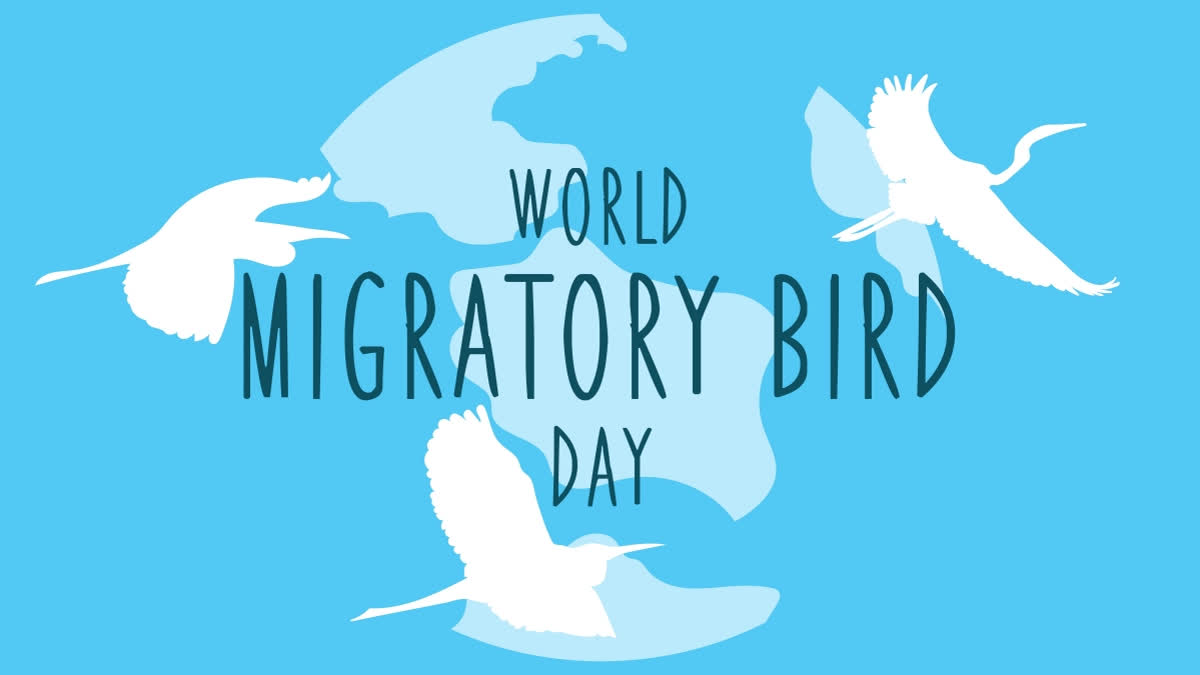World Migratory Bird Day Celebrated in the Second Saturdays of May and October. The two days of World Migratory Bird Day serve as a means to reflect the cyclical nature of bird migration, as well as the varying peak migration periods in the northern and southern hemispheres. This year the dates are May 11 and October 12, 2024.
Importance of the Day:
World Migratory Bird Day is a global awareness raising campaign that aims to highlights the need for international cooperation to conserve migratory birds and concerns related to decreasing populations of insects.
Background:
World Migratory Bird Day was initiated in 2006 by the Secretariat of the Agreement on the Conservation of African-Eurasian Migratory Waterbirds (AEWA) in collaboration with the Secretariat of the Convention on the Conservation of Migratory Species of Wild Animals (CMS). On 26 October 2017 in the margins of the CMS COP12 in Manila, Environment for the Americas (EFTA), the Convention on Migratory Species (CMS) and the Agreement on the Conservation of African-Eurasian Migratory Waterbirds (AEWA), announced an innovative partnership to increase awareness of the plight of migratory birds around the world.
Theme: “Protect Insects, Protect Birds”.
Why Insects: Insects are vital energy sources for many bird species during the breeding season and their migration. They significantly affect the timing, duration, and overall success of bird migrations. Insect populations have declined dramatically in recent decades as a result of the use of insecticides and the destruction of their habitats linked to agricultural intensification, urbanization and road development. Climate change and biological invasions also cause the death of insects by starvation, disease or predation.
Campaign in 2024, draws attention to: Need for proactive measures to reverse this decline such as reducing use of pesticides and fertilisers as well as encouraging organic farming.
The Importance of Migratory Birds: Avian migration is a natural miracle. Over 2,000 species − 20% of all known bird species – travel long distances to breed and feed. They fly hundreds and thousands of kilometres to find the best ecological conditions and habitats for feeding, breeding and raising their young. When conditions at breeding sites become unfavourable, it is time to fly to regions where conditions are better.
Role in Ecosystem:Because they travel long distances, migratory birds have crucial roles across different regions – maintaining natural ecosystems and sustaining people’s livelihoods. These birds don’t just control the numbers of pests and insects that would otherwise plague our natural environments and our crops – many serve as pollinators, moving seeds and nutrients across the world. In fact, the seeds of over 90% of all woody tree species are moved around by birds.
Different migration patterns:There are many different migration patterns. The majority of birds migrate from northern breeding areas to southern wintering grounds. However, some birds breed in southern parts of Africa and migrate to northern wintering grounds, or horizontally, to enjoy the milder coastal climates in winter. Other birds reside on lowlands during the winter months and move up a mountain for the summer.
Threats to Migratory Birds:Climate change, habitat loss, plastic pollution, Invasive alien species, hunting, oil spills, Unsustainable harvest, Wind farms, Biofuel plantations, and mobile signal towers are adversely impacting migratory birds. Forty percent of global bird species are under critical threat.
Why Migratory Birds Need Protection?Migration is a perilous journey and involves a wide range of threats, often caused by human activities. Climate change, habitat loss, and plastic pollution are just a few of the diverse threats that birds face. As migratory birds depend on a range of sites along their distribution area, the loss of wintering and stopover sites could have a dramatic impact on the birds’ chances of survival. Flying long distances involves crossing many borders between countries with differing environmental politics, legislation and conservation measures. Thus, international cooperation among governments, NGOs and other stakeholders is required along the entire flyway of a species in order to share knowledge and coordinate conservation efforts.
Some of the Major Migratory Birds:
• Common Snipe (Gallinago gallinago)- With Europe as their stronghold, Common Snipes embark on journeys that lead them across the expanses of southern Asia to central Africa. Their migration is punctuated by harsh calls echoing through the night, signalling their presence in the moonlit skies. Feasting on insects (and other invertebrates), worms, and small crustaceans, these adaptable birds can forage within muddy habitats with finesse, thanks to their sensitive and flexible bills.
•Little Curlew (Numenius minutus)- Hailing from the vast plains of northern central Siberia, the Little Curlew, the world's smallest among its kind, flocks mostly to northern Australia during the non-breeding season. Standing no taller than your average 30cm school ruler, these birds prefer the hidden depths of dry grasslands, yet sightings on coastal mudflats during migration are not rare. Feeding on a diet ranging from insects to the occasional seed, they employ delicate picking and probing techniques, sometimes even burying their bills in search of sustenance.
• Pheasant-Tailed Jacana (Hydrophasianus chirurgus)- Hailing from the tropical landscapes of Asia, stretching from Yemen to the Philippines, the Pheasant-Tailed Jacana traverses, embarking on seasonal journeys across its expansive range. Despite its name, only the breeding-plumaged birds truly sport the majestic "pheasant-tailed" appearance; in winter months, the birds have short tails. Foraging amidst floating vegetation or skimming the water's surface, they feed on a varied diet of insects, molluscs, and other invertebrates. Their unique hunting methods include walking delicately on vegetation and gracefully swimming in the waters below.
• The Amur Falcon (Falco amurensis)-A small but extraordinary bird of the raptor family, proves its resilience each year by migrating more than 30 000 kilometres. It undertakes the longest known transoceanic migration of any raptor species, with a non-stop flight over open water for several days. From May to June each year, hundreds of thousands of Amur Falcons arrive in Eastern and Central Asia to raise their young near the Amur River, to which they owe their name.
